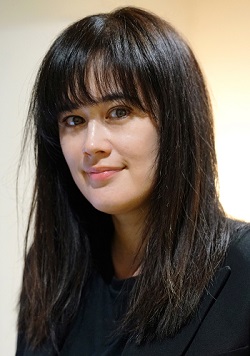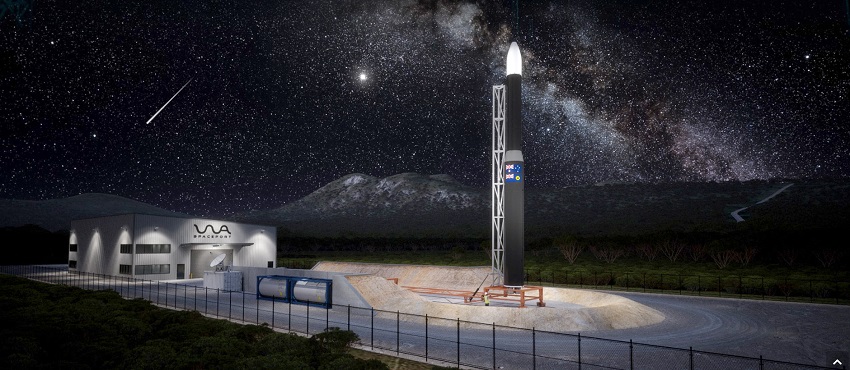There is a global space-rush, as more and more nations invest in space programs to explore mankind’s final frontier. The United Arab Emirates is one example of the new nations joining the space race, having launched a Mars mission in July 2020 only six years after establishing its space agency in 2014. The growing demand on existing, government-operated space launch facilities has created opportunities to develop new, versatile facilities to meet the needs of private and government missions. West Australian construction and mining engineer April Walker has a vision to develop such a facility near Albany, the southern-most point of Western Australia.
April Walker’s idea, which she says is her “passion project”, is called Western Australia Spaceport (WA Spaceport). In an inspiring video on WA Spaceport’s beautifully illustrated website (https://www.waspaceport.com.au/), she reveals how she conceived the idea:
“I always had an interest in space”, April said, “I just didn’t know at the time what my mission was. I was studying for an MBA exam and like all studious MBA students you procrastinate, you delay the inevitable, and so when I procrastinate I go to my favourite subject, which is space.”
She describes watching a documentary on how a launch vehicle gets prepared for launch, which prompted her to think: “This is really quite an undertaking, putting together a launch vehicle, and then they also have the burden of designing, constructing, operating and maintaining a launch facility. How many missions were either delayed, cancelled, deemed not feasible because they also had this responsibility for this launch facility?”
From that moment the founder of WA Spaceport has worked tirelessly and single-mindedly to develop the project. April recounted to AAS that when she first approached the Australian Space Agency, they didn’t take her seriously. Her small team of three, all from backgrounds in mining and construction, pushing an idea for a spaceport to launch rockets into space from Australia, which hasn’t been done since the 1960s, perhaps seemed too left-field. Undeterred, April persisted, using her own money to scope out every aspect of the project—from the location to the launch technicalities to the business demand—and confirm it to be technically and commercially viable. Now she has the support of the WA state government’s Department of Jobs, Tourism, Science and Innovation (JTSI), the City of Albany, engineering firm Norman Disney and Young (NDY), NDY’s giant American parent company Tetra Tech, and the Canadian satellite company Telesat. On 27 November, the project was featured on spaceXcentric, a YouTube channel with 167,000 subscribers dedicated to news about Elon Musk’s SpaceX. Other space and tech Youtube channels have reached out to feature the project in future videos for 2022. April has also received two nominations for the 2022 Australian Space Awards for the “Rising Star of the Year” and “Engineer of the Year” categories.
The website explains the project’s purpose is: “To support international and domestic small satellite launch for individual constellation spacecraft replacement and earth observation applications. WA Spaceport will enable expedient deployment and remove barriers to entry with its cost- and time-effective licenced orbital launch facilities.” It emphasises that by using this dedicated, non-exclusive launch facility, satellite manufacturers, operators, end users and launch service providers will be able to concentrate their efforts on research, development and innovation of their own technologies.
WA Spaceport’s launch services, 30 minutes from Albany, will include regulation support, a clean room, gas services, communications, building services, lifting equipment, workstations, propellants, indoor staging, common launch pad, propellant loading-offloading, indoor launch control centre, downrange RF [radio frequency] facilities, medical supplies and firefighting equipment. WA Spaceport is designed to facilitate all small launch vehicle types. This design feature is unique to launch facilities world-wide; WA Spaceport will be more versatile, nimble and attainable to the smaller launch vehicle operators and their missions. Currently launch facilities are designed for one type of launch vehicle at a time; adapting a facility to cater for additional launch vehicle types has significant cost and time implications.
Albany’s location is ideal for many reasons. The former whaling centre has a seaport, the Port of Albany, and an airport, and is a 4.5-hour drive on major arterial roads from WA’s capital city Perth, which has a major port and airport, allowing cost- and time-effective vehicle and payload transportation. Perth Airport services domestic and international routes, including direct flights to the United Kingdom, United Arab Emirates, India, and Southeast Asia.
Albany’s launch conditions are optimal. It has temperate weather year-round. Its airspace has little to no commercial flight paths overhead to speak of, so no air traffic to obstruct launches, which is a serious issue at many space facilities around the world. It also fronts a huge expanse of clear ocean, essential for space launches to maximise safety from falling rocket stages and anomalies. From this location, WA Spaceport will be able to launch small satellites into most orbital locations (except geostationary and geosynchronous) along lines called azimuths which are the angles at which rockets climb in order to most efficiently intersect their target orbit (this is why rockets don’t rise perfectly vertically, but also go sideways). From WA Spaceport’s location, rockets will be able to launch into azimuths over the Southern Indian Ocean of up to 77˚ eastwards from south and 85-190˚ westwards from south.
Australia was an early pioneer in space exploration, being only the third country to launch a satellite from its own territory. In the decades since the 1960s, however, the nation’s potential in space exploration has gone begging. If April Walker achieves WA Spaceport’s goal of launching into space by the end of 2024, Australia’s return to space launches will have started with one determined woman’s vision.
By Robert Barwick, Australian Alert Service, 8 December 2021








